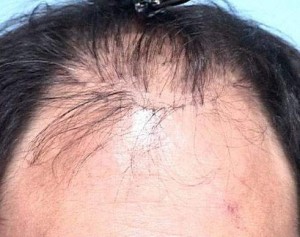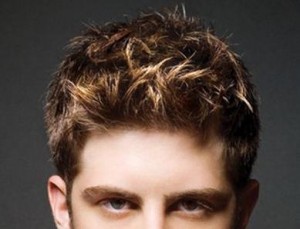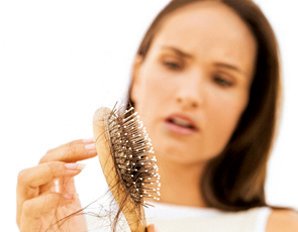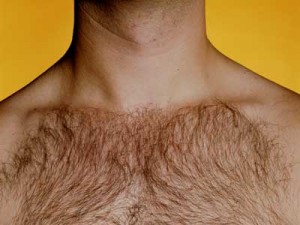Archive for 2011
Thursday, June 9th, 2011
At time I receive inquiries from patients who have previously received transplant surgery at other facilities where they received a pluggy hair transplant, and are dissatisfied with their results. I recently had a patient in my San Francisco hair restoration office with a lot of pluggs from his old transplantation from years ago. He was wondering what repair transplant procedure I can do to help correct his previous surgical mishaps. I inform this patient of the repair hair transplant surgery we perform regularly.
 It is important to have a consultation with a hair transplant surgeon to see what the best method is to repair the pluggy looking area. It is important for us to make a few observations. If there is a hairline which is high enough and the donor hair numbers are sufficient, no plugs need to be removed. The hair line can be lowered and a transitional zone in front of the plugy hairline will be created with a heavier density to cover the plug visibility. It is important to have a consultation with a hair transplant surgeon to see what the best method is to repair the pluggy looking area. It is important for us to make a few observations. If there is a hairline which is high enough and the donor hair numbers are sufficient, no plugs need to be removed. The hair line can be lowered and a transitional zone in front of the plugy hairline will be created with a heavier density to cover the plug visibility.
If the hair line cannot be lowered because there is a lack of room from the original surgery, then plug removal is done by thinning them out (for denser plugs), or those micro and mini grafts could be removed. Follicular units need to be placed between the plugs giving a more even balance to the transplanted area. Adequate density is added to the transplanted area, thus minimizing the pluggy look.
I always emphasize the importance of being evaluated by a quality hair transplant surgeon, who can determine the proper route to take after a close examination. Repair in itself, appears to be simple, but there are challenging cases which might require multiple transplants for the best overall results.
Posted in after hair transplant, hair transplant, hair transplant repair, men hair restoration, San Francisco Hair Transplant | No Comments »
Monday, May 9th, 2011
 A patient once asked me why his surgery of 2850 grafts did not bear the same results after three years as some who have had the exact same number of grafts. I informed him to never compare other patients results simply based on the number of grafts alone. A patient once asked me why his surgery of 2850 grafts did not bear the same results after three years as some who have had the exact same number of grafts. I informed him to never compare other patients results simply based on the number of grafts alone.
Whenever I meet with a patient before hair transplant surgery, I intentionally educate them of what they personally should expect after their procedure. At times I do give big promises to certain patients with better quality donor hair (denser, wavier, and thicker), and some I encourage to get more than one surgery for maximum results. The overall results will be determined by donor hair quality, number of grafts, and hair to skin color contrast.
If two different patients were to be compared who have the same hair characteristics, but one is twice the thickness than the other, a microscope would be used to reveal the cross section of hair. This would reveal the one patients hair is four times thicker (A= r2) and the final result is expected to have a volume of 4 times thicker.
Many factors can contribute to poorer results from a hair transplantation surgery. Some factors may be from the patient themselves, while others situation may be due to the technique of the surgery and how well the follicles maintain post-surgery.
Tags: hair diameter, poor result, thick hair, thin hair
Posted in after hair transplant, hair loss complications, Hair Transplant Procedure, men hair restoration | No Comments »
Saturday, April 9th, 2011
Here is a question from a previous patient of US Hair Restoration:
I was wondering if there is any limitations on performing a second hair transplant surgery for me who have one surgery with you before. I am experiencing more hair loss on the top and I also want to make it even denser in the front. I need to know when is the best time of doing a second procedure and what will be the cost of hair transplant for my second procedure.
A:
The best time for your second hair transplant is around six months from the first hair transpalant is you want to add density to an already transplanted area. If the transplantation is to be done on any other areas it could be done as early as 2 months as long as the donor is healed properly adn allows a second round of removal of strip. In FUE cases anytime after the first 2 weeks when the inflammation is over the second procedure could be done. We have done 2 FUE procedures as back to back but occasionally in some patients the swelling of tissue minimize our success in the first few days after surgery.
The cost of a second procedure in US Hair Restoration is based on the number of grafts and the current cost of hair transplant. However, we have 10% discount on our rates for our previous patients so your future hair transplant procedure will always be discounted with USHR.
Tags: after hair transplant, cost of hair restoration surgery, fue, general information, hair loss, hair loss treatment, hair restoration time restraints, hair transplant cost, hair transplant surgery, hair transplant time restraints, high density hair transplant, large hair transplant case, multiple hair restorations, multiple hair transplants, second hair transplant, time after hair transplant, time between hair transplants, time limit on second hair transplant, time restraints for hair transplants Posted in Achieving quality hair restoration
Posted in after hair transplant, hair transplant, Hair transplant cost | No Comments »
Saturday, March 12th, 2011
Here are a few frequently asked questions we have for your general inquiry:
How do you relocate hair grafts once broken down into follicular units?
The hair grafts (or follicular units) are transplanted based on the individual needs of the patient. The doctor will draw the hairline at your initial consult and right before the procedure and discuss it in detail with the patient. Designing the hairline has to do with the degree of baldness in each area of the scalp and the patients’ preference.
How are the hair grafts placed?
The follicular units must be immersed in a special solution in cold temperature once they are taken from body. When the sites are completed by the surgeon, the hair technician will gently insert the grafts one at a time. This is a very meticulous process and typically takes a few hours.
Does Dr. Mohebi perform the hair transplant surgery himself?
All surgeries are performed by Dr. Mohebi. He will get assistance from a surgical team of hair technicians during dissection and implantation of the follicular unit grafts.
Am I put under sedation while I get the procedure?
You will be put under sedation during the procedure but you will still be conscious. You will become more alert and aware as the surgery goes on, in which you will be sitting in an upright position in a surgical chair most of the time. You can watch a movie, read a book, listen to music or you can sleep (if you choose to) during your hair transplant surgery.
How long before the transplanted area doesn’t look like a procedure has been done?
Redness and swelling after hair restoration surgery is not uncommon and may last a few days following the procedure. Most patients generally recover from surgical swelling and redness after day 4 or 5. A loose fitting hat can be worn to prevent direct sunlight, which will protect the grafts and also keep your swelling or redness from being seen by others, if that is your concern.
Where can I find before and after photos of Dr. Mohebis’ work?
Before and after photos as well as video testimonials of previous hair transplant patients can be found at our facebook page: http://www.facebook.com/home.php#!/pages/US-Hair-Restoration/148987321796051, which we will keep updated as much as possible on a regular basis.
Tags: after hair restoration surgery, after hair transplant, before and after photos, care after hair transplant, Dr. Mohebi, hair line, hair transplant, hair transplant surgery, us hair restoration
Posted in after hair transplant, hair transplant, Hair Transplant Procedure, Video | No Comments »
Friday, March 4th, 2011
 Many patients that come in to my office have a common complaint; hair shedding (some even bring in a ball of hair they have collected from their brush and bathroom floor) and in most cases they are women with long hair. For the most part hair shedding alone is not a sign of hair loss. Shedding is losing thick hair that has completed its growth phase and started its resting phase. Many patients that come in to my office have a common complaint; hair shedding (some even bring in a ball of hair they have collected from their brush and bathroom floor) and in most cases they are women with long hair. For the most part hair shedding alone is not a sign of hair loss. Shedding is losing thick hair that has completed its growth phase and started its resting phase.
- Examples of Normal Hair Shedding
All humans experience a level of hair shedding. It can be up to 100 to 200 hairs per day. Hair shedding is sometimes more exaggerated in people who have had a large surgery, trauma, experienced physiological or emotionally stressful events and women who have recently delivered a child. This is called Telogen Effluvium (excessive temporary loss of telogen hair). In most cases hair shedding is typically temporary and the affected hair will grow back within a few months. There is no cause for concern, unless you have a more visible scalp or thinning of the scalp hair. In which case, you should come in to see a certified hair restoration surgeon.
- The 3 Stages of Human Hair Growth
- Anagen ( Growing stage)
- Catagen (Transitional stage)
- Telogen ( Resting stage)
- Active Hair Loss Determined by Miniaturization Study
Almost every patient that visits US Hair Restoration will have a miniaturization study performed on them, to evaluate their degree of the fineness of their scalp hair which are signs of active hair loss, or in other words scalp hair miniaturization. People with active hair loss show 20-30% more thinning hair than the average person who experiences normal hair shedding. If you feel that you are experiencing active hair loss, we recommend you come into one of our five offices in California( San Francisco, San Diego, Orange County, Beverly Hills and Encino), for a free consultation.
Tags: active hair loss, free consultation, hair growth, hair loss, miniaturization study, normal hair shedding, resting phase, scalp hair miniaturization, telogen efflevium, us hair restoration
Posted in Beverly Hills hair transplant, California hair transplant, Orange County hair transplant, San Diego hair restoration, San Francisco Hair Transplant, Uncategorized, women hair loss | No Comments »
Friday, February 25th, 2011
Swelling in the forehead and transplanted area is a very common side effect for a majority of people who receive hair transplant in the front and top areas of their scalp. The swelling (or skin edema) is due in most part to the inflammatory reaction of healing incisions. Application of anesthetic solutions by intra-operative injection is unrelated to this common side effect. Some patients may not experience swelling for the first day or two after hair transplant, but may start to notice swelling 3 to 4 days after the procedure. In most cases the swelling disappears 4 to5 days following the hair transplant.
Swelling can be minimized by:
- Diluted steroid solutions infiltrated into recipient area during surgery (this method may be used on a select few).*
- Keeping your head above chest level can significantly minimize the amount of swelling so sleeping in a semi-upright position for the first few nights is recommended.
- Wrapping your forehead with an elastic bandage (do so, only under the instruction of the surgeon).
Systematic anti-inflammatory medications such as steroids can be prescribed for a short period to most hair transplants to minimize swelling post op.
*Dr. G. Abbasi has conducted a recent study on the effect of diluted solution of steroids to minimize the rate of swelling after hair restoration surgery. Results of the steroid injections on swelling after hair transplant can be found in the Journal of Aesthetic Surgery (Hair Transplantation: Preventing Post-operative Oedema). US Hair Restoration offers this option to patients who are prone to swelling.
Tags: after hair restoration surgery, after hair transplant, care after hair transplant, common side effect, skin edema, steroid injections on swelling, swelling post op
Posted in after hair transplant, hair transplant | No Comments »
Friday, January 21st, 2011
Good day all,
I recently had a case that I found very interesting and I thought you might as well. A patient was experiencing hair loss and was very unhappy to the point that it had a negative effect on his and his family’s lives. He was attending a school of medicine in another state and was willing to fly to our US Hair Restoration offices in Encino, California for the possibility of receiving a large FUE transplant from his body and beard into the balding areas of his scalp. He was hoping that this would help to end his hair loss once and for all.

Body hair can be used as an alternative method for hair restoration, as long as the patient understands that the end result will not be comparable to a scalp hair transplant due to a shorter growth phase (Anagen), as opposed to a long resting phase (Telogen), and a smaller final length of the hair, which are the characteristics of body hair. Thus, you may only see a portion of transplanted hair follicles in growth phase while the remaining hair stays in resting phase without maintaining a visible hair shaft.
Another option for hair transplantation is the possibility of using beard hair. Beard hair (for many patients) is closer to scalp hair and has a longer growth phase which allows it to grow to be much longer in comparison to body hair. Both of these options have pros and cons and patients should weigh all of their options, after a full evaluation with a certified hair restoration surgeon. By speaking one-on-one with a qualified hair transplant surgeon, patients are able to find a treatment plan that best fits their needs.
To determine what option is best for you, attend a free consultation with a qualified hair restoration physician. If (like the patient above) traveling to one of our offices is inconvenient for you, then please feel free to fill out an online consultation request and our office staff will follow up with you as soon as possible to begin scheduling for a internet/phone consultation.
Tags: beard hair transplant, BHT, body hair restoration, body hair transplant, body to scalp hair transplant, chest to scalp hair transplant, hair transplant with body hair
Posted in hair transplant, Hair Transplant Procedure, men hair restoration | No Comments »
Friday, January 14th, 2011
Hello all,
I had a patient ask me a few good questions about limitations after having the hair restoration procedure done and I thought you might be interested in knowing the answers to them as well. I hope this information is useful to you!
When is it ok to start using the sauna (Jacuzzi) or pool?
One week after hair restoration surgery, is the suggested amount of time that you wait until you fully immerse the newly transplanted hair into water. What you want to be careful of though, is sun exposure. You should be wearing a hat or using sun block, to protect your scalp if you must go into direct sunlight until about six months after the procedure.
How soon after having the hair transplant surgery may I start taking vitamins?
Vitamins and most medications can be started immediately in the first few days following hair transplant surgery, if for any reason they were discontinued prior to the hair restoration procedure. There will be instances that we will request for a patient to prolong or stop any intake of medications before the surgery, that contain blood thinners; i.e.-aspirin, or aspirin like medications, to ensure there will be no complications during the hair restoration procedure. Here at US Hair Restoration, we want all of our patients to have the best experience possible and educating our patients is top priority.
Tags: after hair transplant, care after hair transplant, hair care after hair restoration, jacuzzi after hair transplant, showering after hair transplant
Posted in after hair transplant, hair transplant | No Comments »
|
|
 It is important to have a consultation with a hair transplant surgeon to see what the best method is to repair the pluggy looking area. It is important for us to make a few observations. If there is a hairline which is high enough and the donor hair numbers are sufficient, no plugs need to be removed. The hair line can be lowered and a transitional zone in front of the plugy hairline will be created with a heavier density to cover the plug visibility.
It is important to have a consultation with a hair transplant surgeon to see what the best method is to repair the pluggy looking area. It is important for us to make a few observations. If there is a hairline which is high enough and the donor hair numbers are sufficient, no plugs need to be removed. The hair line can be lowered and a transitional zone in front of the plugy hairline will be created with a heavier density to cover the plug visibility.




